One of the most common dog mom myths I hear is that a dog needs a backyard to be happy and fulfilled. In fact, this myth is so pervasive that some rescues actually require potential adopters to have a yard with a physical fence 🤯. This is such a shame, because having a dog without a yard is not that big of a deal. I mean, don’t get me wrong; a private, fenced yard is definitely convenient for dog owners. Not having to put on pants just to take your dog outside to pee is pretty sweet. But, convenience is not the same thing as a requirement. Dogs don’t need a yard to be happy.
Not to mention, people who rely on the convenience of putting their dog outside in the backyard aren’t actually exercising their dog, sooo… 👀
*Disclosure: This post contains affiliate links. This means that I may earn a small commission, at no additional cost to you, if you make a purchase. Thank you for supporting my blog! I only recommend products I use myself, and all opinions expressed here are my own. Read my full disclosure here.
How To Exercise a Dog Without a Yard
Here’s the thing: I can confidently say from firsthand experience with my own dogs that there are a ton of ways you can exercise a dog without a backyard, and it’s not just super long walks or 5k runs around the neighborhood. I lived with my first dog, Mia, in an apartment for most of her life. Mia was high energy and, when I first adopted her, very reactive towards strangers. Not having a yard during that time was tough, and I really wish I knew then what I know now. But, I now know what I know (wow, talk about a tongue twister) because I did a lot of research on what dogs need, and you know what? Fences were not at the top of any list.
Nowadays, we live in a row house with two dogs and no yard. June and Margot are what I would consider medium to low energy dogs, but Margot is very noise sensitive, which means really long walks through the city aren’t always an option. Obviously walks are important (a dog has to potty, ya know?), but they are far from the only option available to us.
Ready to know more? Here are 9 ways to keep your dog happy without a yard.
1. Daily Walks
Yeah, I couldn’t write this post without including daily walks. If you don’t have a home with a yard, you gotta take your dog on a walk in order to use the bathroom. But the quality of the walk is going to be way more important than the quantiy. What I mean is letting your dog sniff and explore for a 15 minute walk can be way more impactful than a 3 mile run (unless you are training to run a 5k with your dog, obviously).
Dogs need to sniff. It’s how they get information about their environment, and it’s a really good way for them to relax. Yes, putting in a mile or two is important for physical health (like maintaining a healthy weight and joints), but letting your dog sniff will actually help them calm down and relax. We aim for two 15-20 minute walks every day; once in the morning, once in the evening. Although sometimes I definitely feel very “ugh” about taking a walk, most of the time I’m grateful for the motivation to get some steps in.
On days where we can’t get in as long of a walk for whatever reason (rain, energy, time), we make the most of our potty breaks by allowing the dogs to sniff as much as they want to. I like to sometimes scatter treats in the grass to encourage this behavior and make it even more rewarding.
2. Use a Flexi-leash or Longline
Before you @ me for actually recommending a flexi-leash, hear me out. When used responsibly (AKA you actually pay attention to the leash and your dog), flexis are great tools to give your dog space to explore while still respecting leash laws and keeping your dog safe! I really like this version, which has a neon yellow leash that is highly visible from a distance. Another option is a longline, which is just an extra long leash (anywhere between 10 feet all the way up to 50 feet). Like the flexi, a longline gives your dog the freedom to explore and sniff without sacrificing the safety of a tether. I would recommend a biothane longline, as they are the easiest to clean (and trust me, a longline will be dragged through a TON of dirt).
One of the best ways to make the most out of this simulated off leash experience is to get a well-fitting Y harness (like this) with a back clip. Then, head to an uncrowded space to let your dog explore! You could try an urban greenspace or park (assuming it’s not too crowded), an empty sports field, or a cemetery. Just remember to keep your dog under control and mind the leash. The longline can get tangled easily, and flexi-leashes may not hold up to a 100 lbs dog tearing after a squirrel. I always bring lots of treats with me for these exploratory walks so I can reinforce check ins and practice recall.
3. Sniffspot
No yard? No problem! Sniffspot is a really cool app that is kind of like AirBnB, except for dogs. And, instead of renting a place to stay, you rent a yard to play in. One of the coolest things about Sniffspot is that you can sometimes find really interesting spaces to explore. For example, we got to explore a huge almond orchard last summer, and we rented a Sniffspot that had a pool for Margot’s birthday. Prices can range from $5 to $25 per hour per dog, depending on the place. I’ve also found that most places waive the “per dog” fee and only ask for the “per hour” fee.
Sniffspot is such a great option for dogs who struggle with reactivity and/or anxiety, because you can hike and explore and play without the risk of running into other people or dogs. It’s also great if you have multiple dogs (like me), because it gives them space to wrestle and play that isn’t a dog park.
4. Play With Your Dog
You know what is way more important than having a yard for your dog? Playing with your dog. Play is such an underrated activity. It’s fun and active, it releases stress, and it strengthens the bond between you and your dog. Playing tug is actually a really effective way to tire your dog out both physically and mentally! You can also wrestle or even play a light game of fetch indoors. When Margot gets all riled up, I like to combine tug/fetch into a game I call “tug and toss.” We tug, tug, tug, and when I “win” the toy, I will toss it for her to chase. I’m not talking like 20 yards here, just a few feet. This makes the game extra fun for her!
Playing is a great way to get your dog’s heart rate up, which makes it an excellent alternative for walks if your dog is in need of a little extra physical exercise.
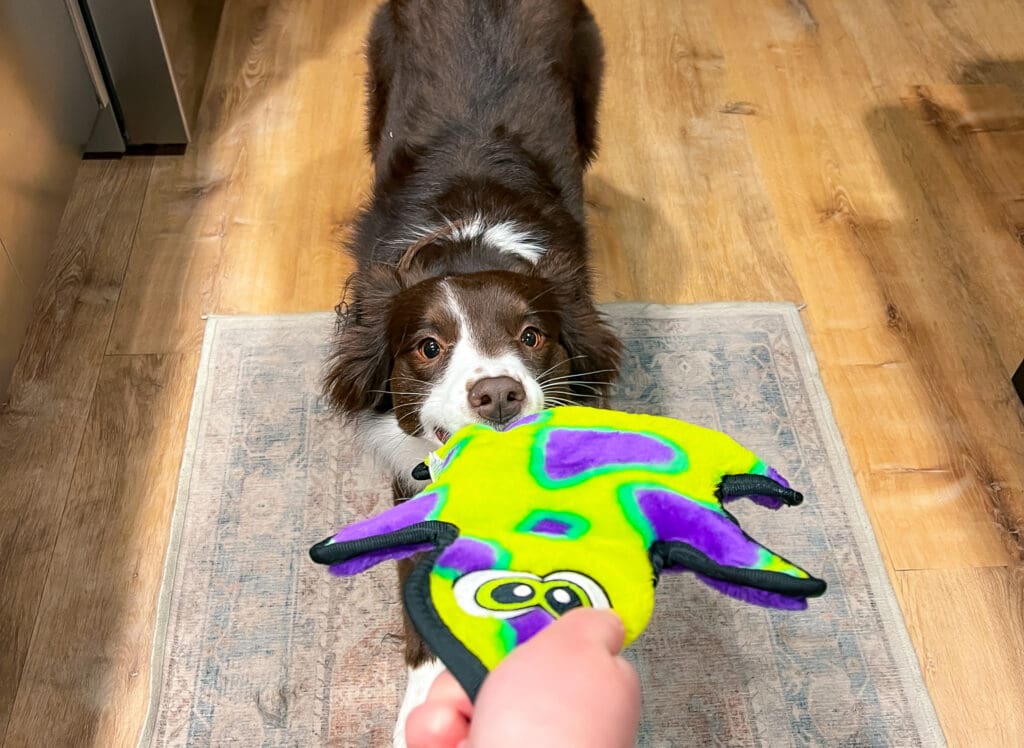
5. Sniffing Games
Sniffing games became our go-to activity when Margot was struggling the hardest with her noise sensitivty on walks (TL;DR someone set off fireworks nearby when she was outside after dark for a potty break about a year ago, and it took her MONTHS to recover). This exercise provides your dog with a ton of mental stimulation, which is key for a happy and satisfied pup. You can teach this game to a puppy or an adult dog, and you can play it just about anywhere. It goes like this:
- Put your dog in a sit/stay out of sight, or put them in a different room. Hide an extra smelly treat. Start somewhere obvious and easy to find while your dog is learning the game, and then you can increase the difficulty of the hiding spots as they get the hang of it.
- Bring your dog in and hold out a treat (or just your hand that was holding the treat) for your dog to smell. Cue the to “smell.”
- Release your dog to find the treat! Our cue for this is “Go find it!”
- When your dog finds the treat, make it extra exciting with lots of praise.
You can repeat this game for a few rounds, but pay attention to your dog. Because this game requires a LOT of work, it can tire your dog our pretty quickly. You might notice them start panting, or maybe their finding skills start to fall apart. That’s a good time to quit before the game becomes overwhelming or overstimulating for your dog.
6. Buy a Flirt Pole
No, a flirt pole is not some weird BDSM thing. It’s a training tool used to build a dog’s drive (okay, this still sounds like a BDSM thing, but hear me out). Flirt poles are actually really common cat toys. It’s just a stick with a string attached to one end, and at the end of the string is some sort of enticing toy (for cats it’s always like feathers or shiny plastic paper). The dog version is similar, but a lot more rugged, and instead of feathers, there is usally some sort of tug-type toy attached, like this.
Flirt poles engage your dog’s urge to chase. You can use them in smaller spaces to get your dog to run, jump, and tug. We’ve played with the flirt pole in our garage, on the sidewalk, and in smaller greenspaces, like urban parks. It is a great exercise to do on a longline if you are outside, just be mindful that you and your dog don’t get tangled up. Because this is such an active game, it’s also a great alternative to walks for physical exercise.
7. Shaping Games
Shaping games are great activities to build confidence and wear your dog TF out. These are brain games, and they make your dog think. Shaping games are like that childhood game of Hot or Cold, where you get someone to identify an object by letting them know if they are getting close (warmer!) or are way off base (colder…).
With shaping games, choose a simple behavior for your dog, like touching their nose to your hand. Then, you reward your dog as they get closer to achieving that behavior. To start, you might reward any time they touch your hand, whether that’s with their paw or their nose or whatever. As they start to understand that touching your hand = reward, you might increase the difficulty to where it has to be their nose touching your hand. Once they’ve figured that out, you might start to move your hand into different positions, like up high or down low or just farther away from your dog.
There are lots of shaping games out there, and you can use them to teach really fun tricks. Because your dog is having to really think, this activity can be exhausting (which is kinda the point). So, keep it short (10-15 minutes, depending on your dog) to keep it fun.
8. Practice Dog Training
Did you know that you really only need to work on training your dog for 5-10 minutes per day to see amazing results? Dog training has so many benefits: it strengthens your bond, you get to build behaviors that are really helpful for you and your dog, it boosts your dog’s confidence, and it gives them something to do. I find it helpful to use this template to create a training schedule so that you can identify some behaviors that are useful for you and your dog. Some examples that I find useful with my own dogs include down, stay, middle, handling exercises (like touching paws, brushing, examining teeth), and recall.
As your dog starts to really nail their cues indoors, try taking them out on a longline to practice things like down, stay, and recall aroud higher distractions. Just like with shaping games, it’s better to keep training sessions short to avoid frustration or boredom. Of course, this depends on your dog. June gets pretty tired of training after 10 minutes, but Margot could go on and on for probably 20-25 minutes. Just pay attention to your dog’s signals and always choose to end a session if you or your dog starts to get frustrated.
9. Enrichment
Ahh, yes. One of the hottest buzzwords in the dog world right now is enrichment. But WTF is enrichment? Well, broadly speaking, enrichment is anything that enriches your dog’s life. This could be everything from treats to affection to play. But there is a more specific concept of enrichment that I prefer, which is giving your dog opportunities to engage in natural dog behaviors.
What are natural dog behaviors? Often they are things humans have labeled as “bad.” Things like chewing and shredding, digging, barking, chasing, etc. But these are not bad in the sense that they are wrong; it’s just that they can be really frickin’ inconvenient for us as dog owners. No one wants to find their favorite shoes torn to shreds.
The good news is that you can intentionally provide your dog opportunities to engage in these behaviors in a way that doesn’t cause problems for you. Give your dog a nice toy to destroy, and they are less likely to destroy your shoes.
One of the easiest ways to add enrichment to your dog’s life is puzzle feeders. Ditch the bowl and use a slow feeder or lick mat instead. This gets your dog to “work” for their food and engage in natural dog behaviors like seeking and licking. I’m also a big fan using paper trash like toilet paper or paper towl rolls, packing paper, and cardboard boxes to hide treats in. This gives your dog a chance to seek and shred, which is really heckin’ fun.
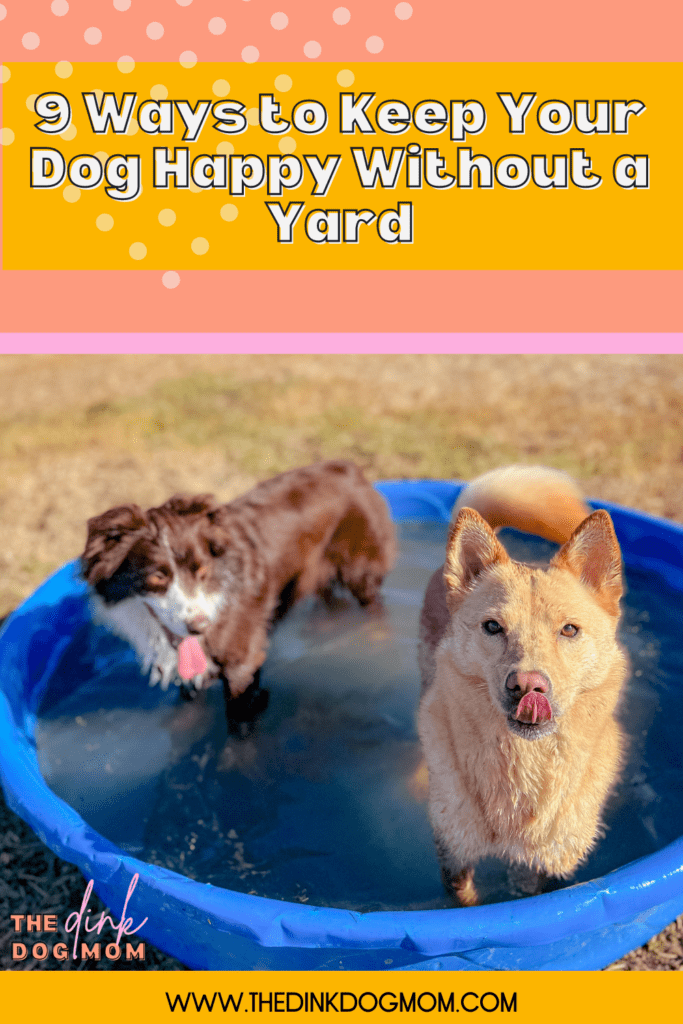


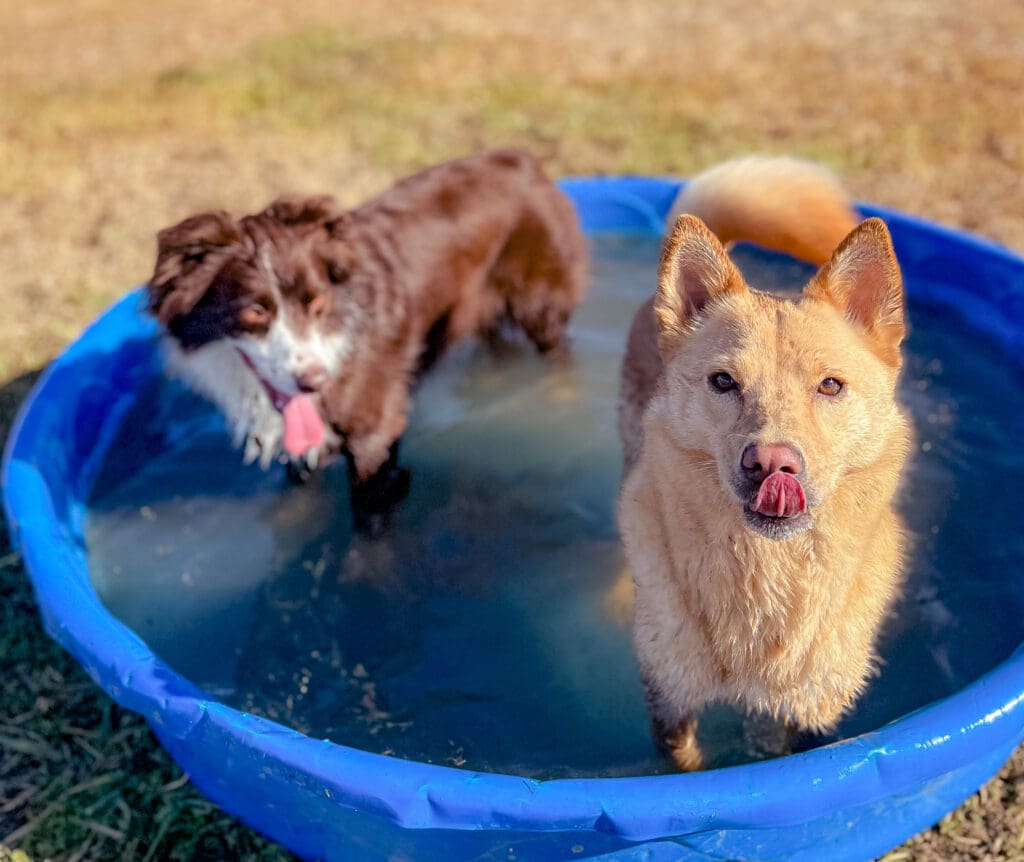
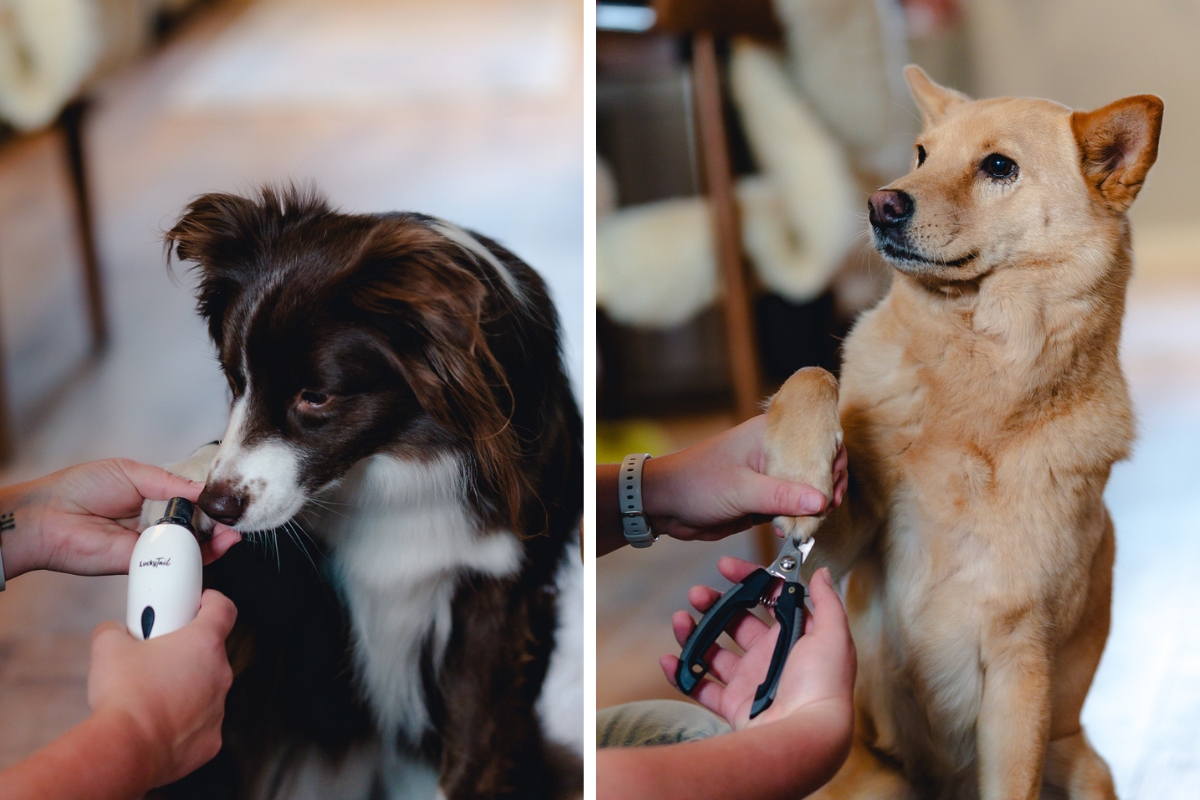
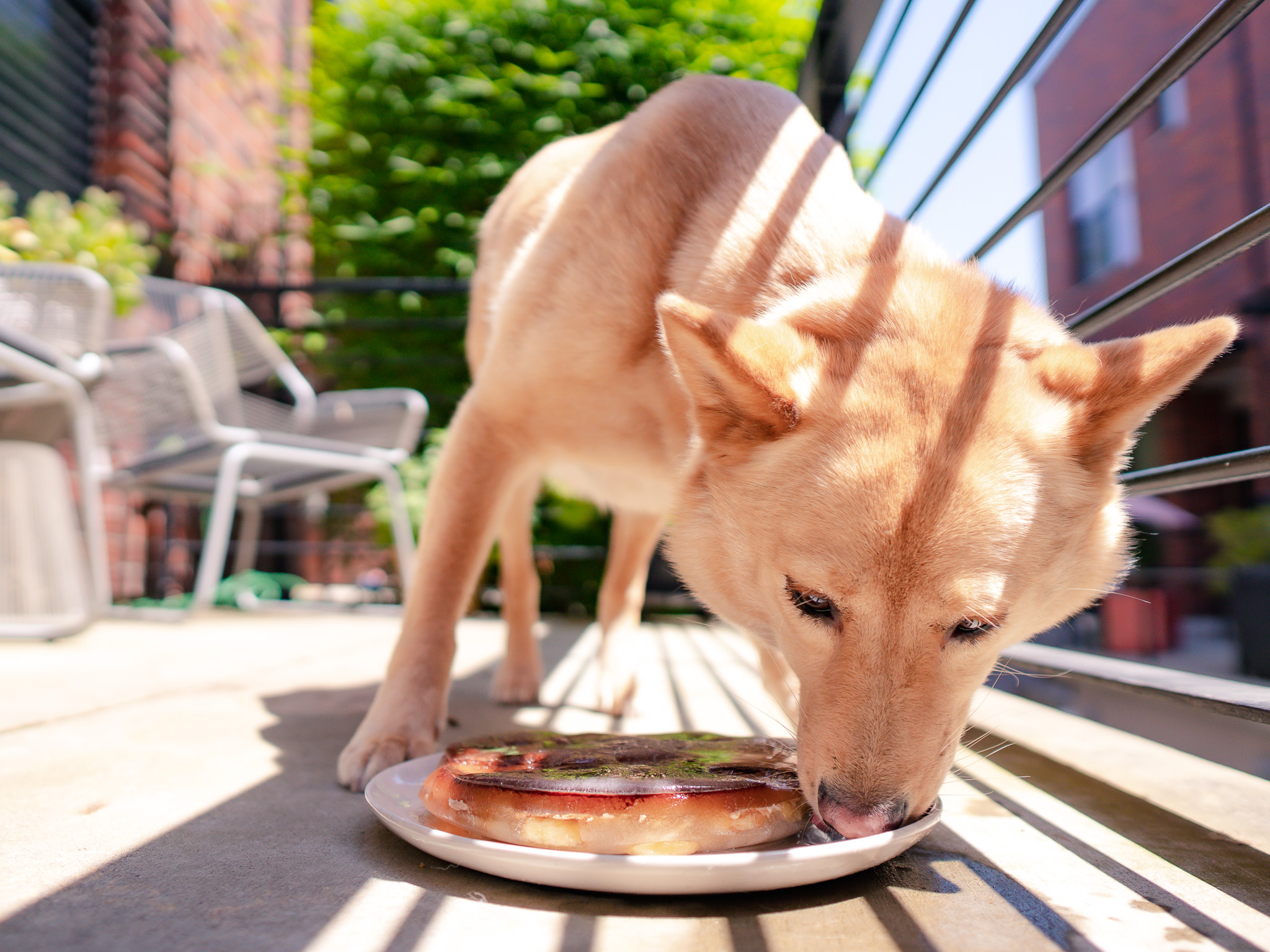


2 Responses
Thank you so much for this post! I recently started a new job in a new city and had to move to an apartment building. I’ve struggled to find activities for my dog that don’t involve throwing a ball in a grassy area (his favorite game ever). Unfortunately, with me working longer hours, I’ve noticed some spots on my carpet, which is unlike his behavior… thankfully my carpet cleaners came and the stains were eliminated. But, I’m really intrigued with Sniffspot! I’m definitely going to check that out!
Thanks so much for sharing, Tammie! I’m glad some of these ideas were helpful for you. Sniffspot is so cool, I hope they have some near your location!